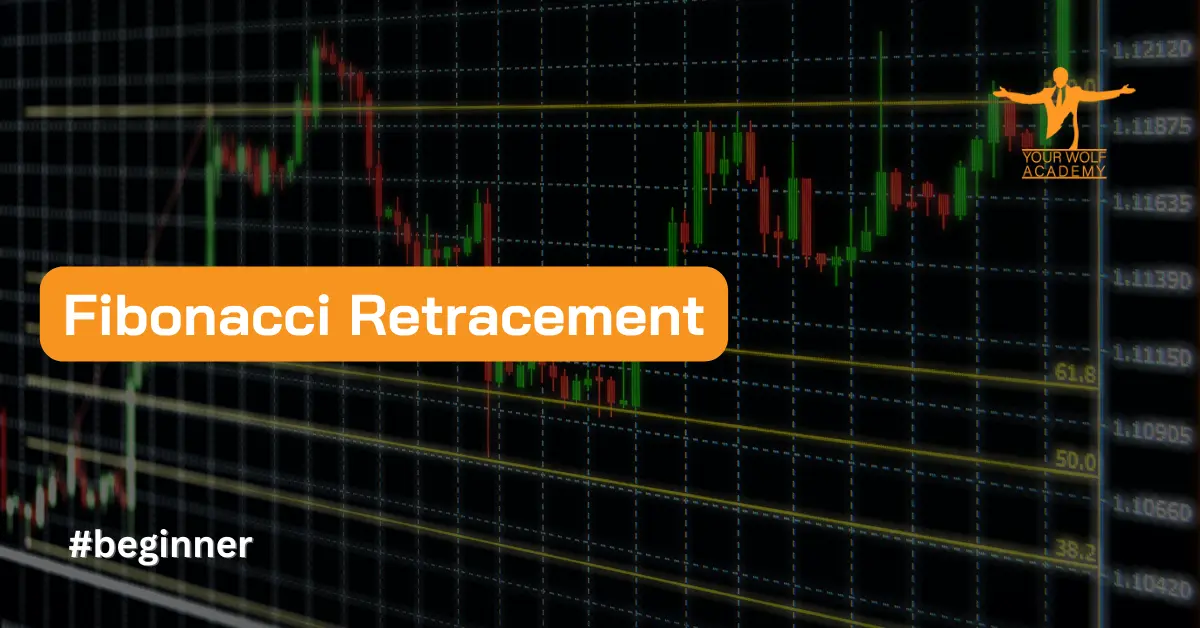Fibonacci retracement is a popular technical analysis tool used by traders to identify potential levels of support and resistance in financial markets. This tool is based on the Fibonacci sequence, a series of numbers that occur naturally in many aspects of nature, including the growth patterns of plants and animals. In this article, we will explore the concept of Fibonacci retracement, its origins, and how it can be applied in trading.
What is Fibonacci Retracement?
Fibonacci retracement is a technique used to identify potential levels of support and resistance in financial markets. It is based on the idea that markets tend to retrace a predictable portion of a move, after which they will continue in the original direction. The levels that are used in Fibonacci retracement are derived from the Fibonacci sequence, a sequence of numbers that occur naturally in many aspects of nature.
The Fibonacci sequence is a series of numbers in which each number is the sum of the two preceding numbers, starting with 0 and 1. So the sequence goes 0, 1, 1, 2, 3, 5, 8, 13, 21, 34, and so on. This sequence has been observed in many aspects of nature, including the growth patterns of plants and the spiral shapes of seashells.
The key levels used in Fibonacci retracement are 23.6%, 38.2%, 50%, 61.8%, and 100%. These levels are calculated by measuring the distance of a move in a market, usually from a swing high to a swing low, and then multiplying that distance by the Fibonacci ratios.
How to Use Fibonacci Retracement
Fibonacci retracement can be applied in any market that exhibits trending behavior, such as stocks, forex, and commodities. To use Fibonacci retracement, a trader first identifies a significant move in the market, usually from a swing high to a swing low. They then draw horizontal lines at the key Fibonacci levels of 23.6%, 38.2%, 50%, 61.8%, and 100%.
These levels are potential areas of support or resistance, where the market may bounce or reverse direction. If the market is in an uptrend, traders may look for buying opportunities near the Fibonacci retracement levels as potential areas of support. Conversely, if the market is in a downtrend, traders may look for selling opportunities near the Fibonacci retracement levels as potential areas of resistance.
It is important to note that Fibonacci retracement levels are not always precise. Markets can be volatile, and prices may move beyond the expected retracement levels. Therefore, it is important to use Fibonacci retracement in combination with other technical analysis tools and price action analysis to confirm potential levels of support or resistance.

Origins of Fibonacci Retracement
The Fibonacci sequence was first introduced to the Western world by Italian mathematician Leonardo of Pisa, also known as Fibonacci, in his book Liber Abaci, which was published in 1202. In this book, Fibonacci described a problem involving the reproduction of rabbits, which led him to discover the sequence that now bears his name.
Although Fibonacci retracement was not introduced until much later, the Fibonacci sequence had already been observed in many aspects of nature, including the growth patterns of plants and animals. The French mathematician Charles Bonnet first applied the sequence to stock market analysis in the 19th century, and it has been used by traders ever since.
Benefits of Using Fibonacci Retracement
Fibonacci retracement is a powerful tool for traders because it can help identify potential levels of support and resistance in a market. These levels can be used to make trading decisions, such as where to enter or exit a trade, and can also be used to set stop-loss and take-profit levels.
In addition, Fibonacci retracement can be used in conjunction with other technical analysis tools and indicators, such as moving averages, trend lines, and oscillators, to confirm potential levels of support or resistance. This can help traders make more informed decisions and improve their trading performance.
Moreover, the use of Fibonacci retracement can also be helpful in managing risk. By identifying potential levels of support or resistance, traders can set stop-loss orders below support levels or above resistance levels to limit potential losses if the market moves against their position. This can help to protect their trading capital and reduce the overall risk of their trades.
Join Your Wolf Academy for More Trading Education and Benefits
If you are interested in learning more about trading and technical analysis, consider joining Your Wolf Academy. Our educational website offers a wide range of resources and benefits for traders, including:
- Brokerage company recommendations: We can recommend you regulated brokerage companies that meet our strict standards. This can help you find a reliable broker and reduce the risk of fraud or scams.
- Free content: We offer a variety of free educational content, including articles, videos, and webinars, to help traders of all skill levels improve their trading knowledge and skills.
- Free trading signals: Our team of analysts provides free trading signals for major currency pairs, stocks, and commodities, which can help traders identify potential trading opportunities.
- Technical analysis: We provide in-depth technical analysis of various financial markets, including forex, stocks, and commodities, to help traders make informed trading decisions.
- Weekly webinars: Our team of experts conducts weekly webinars on a variety of trading topics, including technical analysis, fundamental analysis, risk management, and trading psychology.
Conclusion
Fibonacci retracement is a powerful tool for traders that is based on the Fibonacci sequence, a series of numbers that occur naturally in many aspects of nature. This technique can help traders identify potential levels of support and resistance in financial markets, which can be used to make trading decisions and manage risk.
While Fibonacci retracement is not always precise, it can be used in conjunction with other technical analysis tools and price action analysis to confirm potential levels of support or resistance.
If you are interested in learning more about trading and technical analysis, consider joining Your Wolf Academy for expert recommendations, free content, and other benefits.


